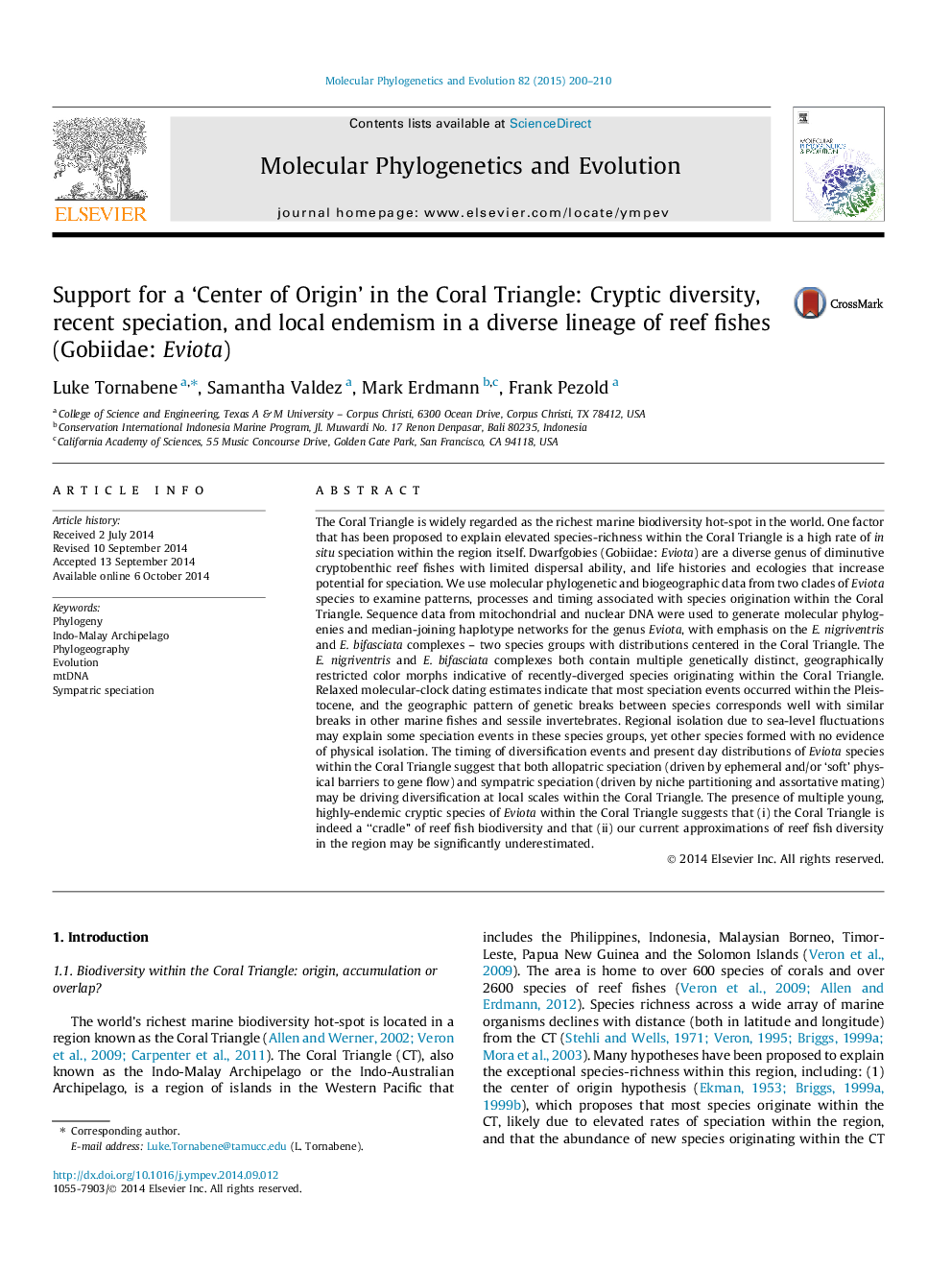| Article ID | Journal | Published Year | Pages | File Type |
|---|---|---|---|---|
| 5919030 | Molecular Phylogenetics and Evolution | 2015 | 11 Pages |
•Dwarfgobies are a diverse group of cryptobenthic reef fishes diversifying within the Coral Triangle.•We study the pattern and timing of speciation in two clades of dwarfgobies using time-calibrated phylogenies.•Rapid speciation occurred at small geographic scales within the CT during the Pleistocene.•Speciation occurred in allopatry and sympatry, in some cases associated with niche partitioning and assortative mating.•The number of endemic species and the overall species-richness in the Coral Triangle is likely severely underestimated.
The Coral Triangle is widely regarded as the richest marine biodiversity hot-spot in the world. One factor that has been proposed to explain elevated species-richness within the Coral Triangle is a high rate of in situ speciation within the region itself. Dwarfgobies (Gobiidae: Eviota) are a diverse genus of diminutive cryptobenthic reef fishes with limited dispersal ability, and life histories and ecologies that increase potential for speciation. We use molecular phylogenetic and biogeographic data from two clades of Eviota species to examine patterns, processes and timing associated with species origination within the Coral Triangle. Sequence data from mitochondrial and nuclear DNA were used to generate molecular phylogenies and median-joining haplotype networks for the genus Eviota, with emphasis on the E. nigriventris and E. bifasciata complexes – two species groups with distributions centered in the Coral Triangle. The E. nigriventris and E. bifasciata complexes both contain multiple genetically distinct, geographically restricted color morphs indicative of recently-diverged species originating within the Coral Triangle. Relaxed molecular-clock dating estimates indicate that most speciation events occurred within the Pleistocene, and the geographic pattern of genetic breaks between species corresponds well with similar breaks in other marine fishes and sessile invertebrates. Regional isolation due to sea-level fluctuations may explain some speciation events in these species groups, yet other species formed with no evidence of physical isolation. The timing of diversification events and present day distributions of Eviota species within the Coral Triangle suggest that both allopatric speciation (driven by ephemeral and/or ‘soft’ physical barriers to gene flow) and sympatric speciation (driven by niche partitioning and assortative mating) may be driving diversification at local scales within the Coral Triangle. The presence of multiple young, highly-endemic cryptic species of Eviota within the Coral Triangle suggests that (i) the Coral Triangle is indeed a “cradle” of reef fish biodiversity and that (ii) our current approximations of reef fish diversity in the region may be significantly underestimated.
Graphical abstractFigure optionsDownload full-size imageDownload as PowerPoint slide
